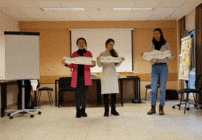4 Quadrants
4 Quadrants
RATIONALE
This activity allows participants to think about situations in which persons were discriminated or even aggressed because of their gender.
OBJECTIVES
- To raise awareness on the different manifestations of discrimination and exclusion in society;
- To start identifying what each participant can do to prevent these from occurring or continuing.
REQUIREMENTS
- Materials: 1 copy of the “4 Quadrants” handout for each participant.
- Time: 45 min.
INSTRUCTIONS
- Give each participant a copy of the 4 quadrants handout. Explain to each of them the meaning of the 4 words, also offering a personal example.
- Ask participants to select a partner and to share in these pares an example of a time when they played one of these roles.
- Reconvene the group and discuss the following:
DISCUSSION TOPICS
- Was it easy to identify these 4 occasions? Which one was the most difficult to remember?
- How did it make you feel to remember those 4 situations?
- How did you feel remembering about times when you were the perpetrator? What made you act as one? How could have someone prevented you from doing that?
- How can a “bystander” be turned into a “healer”?
- What can we learn from this activity?
Method adapted from:
NANCY FLOWERS, Marcia Bernbaum, Kristi Rudelius – Palmer, and Joel Tolman (2000), “The Human Rights Education Handbook. Effective Practices for Learning, Action and Change”, Human Rights Resource Center, University of Minnesota,
HANDOUTS
4 Quadrants Activity
Remember a situation in which you were a:
“Victim”
A time when, because of your gender, someone said or did something to you that hurt you
|
“Perpetrator”
A time when you disadvantaged someone because of his/her gender.
|
“Bystander”
A time when a person was disadvantaged because of his/her gender and you just witnessed it without intervening.
|
“Healer”
A time when a person was disadvantaged because of his/her gender and you intervened to stop it.
|
Changing gender roles
Changing gender roles (role playing activity)
RATIONALE
Participants will be able to understand whether it is possible and how to change gender roles.
RESOURCES
- Time: 60-90 minutes
- Resources: facilitator must prepare three or four cards for the role-playing game (the number of cards depends on the number of participants in the training). It is recommended to prepare your cards taking into account the specifics of the community and the local context.
- Preparations: no preparation is required
INSTRUCTIONS
- Divide participants into three or more groups. Each group must take one card for the role game. Give them 30 minutes to prepare roles.
- Ask each group to present its role game. After each presentation, discuss possible solutions to the problem and write down the proposals on paper or on a blackboard (for example, among the proposals can be - education and training, presentations, negotiations, etc.).
- When the groups’ presentations are completed, review all of the recorded proposals. Ask participants about possible additions and practical recommendations how to change gender roles in communities. Record additional suggestions.
- Explain that, as seen in previous activities, the gender roles can be changed, because they are a product of the society. The roles of men and women including roles related to family life, employment and career, can be adapted to the current times. Ask participants what kind of changes they would make in society.
DISCUSSION TOPICS
- How did you feel to participate in this activity?
- How can this activity help us understand gender based discrimination?
- What does this exercise teaches us about the roles women and men must assume in society?
- What did you learn from this activity?
- Do you any examples where men and women equally divide the responsibilities between each other?
HANDOUTS
Card # 1
Situation: A household where women work very much, but their work is not recognized and evaluated.
Task: Prepare a 10-minute sketch about possible ways of recognizing and evaluating female labor.
|
Card # 2
Situation: A community where women are not involved in public or political life.
Task: Prepare a 10-minute sketch about how you can increase the participation of women in the life of the community.
|
Card # 3
Situation: A family where both husband and wife work, but the wife also has to do all the homework.
Task: Prepare a 10-minute sketch about the optimal division of household duties between husband and wife.
|
Card # 4
Situation: A family where both husband and wife work, the duties of the house are divided between them. Both are satisfied with the way of their life, but the mother-in-law who lives with them, is against her son being responsible for some homework.
Task: Prepare a 10-minute sketch as a husband and wife can be persuaded and get support from their mother-in-law
|
A better me!
A better me
RATIONALE
Even if most of us have a general knowledge about what we should do or not do, we often do not acknowledge them. “Each trip starts with the first step”. So, change start with us acknowledging what we need to change about us and start making concrete plans.
REQUIREMENTS
- Group size: 10+
- Time: 40 – 60 minutes
- Materials: Big room
INSTRUCTIONS
- Introduce the theme of the activity
- Give each participant a copy of the “A better me” handout. Ask participants to assess themselves from 1 to 5, based on how much those statements represent them and their personality.
- Following the assessment, ask participants to start thinking about things that they should start doing, stop doing or do differently in order for them to be more open to gender equality.
- Offer about 20 minutes for the activity.
- Once this is finished, group the participants in a circle and start the debriefing process.
DISCUSSION TOPICS
- Was there anything that surprised you while making the self-assessment?
- What can be something you can immediately change about you?
- What are the biggest challenges you foresee in making these changes in your life?
- How did it feel to write concrete things you plan to change?
- What can you learn from this activity?
HANDOUTS
Page I
A better me!
Please rate your own behaviour from 1 to 5.
1 - means you don’t find yourself in the description on each line,
5 - means that the description is an essential part of your life/work.
|
I educate myself about gender based discrimination (e.g. what it is, how it is manifested, how it can be prevented, etc.), by attending classes, workshops, by reading about it, searching for good practices, etc.
|
|
|
I promote/advocate for equal treatment between genders in my close spheres of influence (e.g. by explaining this to relatives, friends or co-workers and pushing them to adopt it, by promoting gender equality attitudes on social media, by preventing or taking action in situations in which I see people in my proximity showing attitudes of GBD, etc.).
|
|
|
I promote/advocate for gender equality in society in general (e.g. by speaking/writing to people outside my close environment, politicians and different other public or private entities to raise awareness of problems that GBD are creating, by participating in demonstrations or being an activist for the rights of vulnerable groups, etc.).
|
|
|
I monitor the environment in my organisation, my school, my work or other places I hang out to check if they promote/foster gender equality or not (for equal pay, equal career opportunities, for prevention of sexual harassment).
|
|
|
I share household duties with my partner (e.g. cooking, cleaning, taking care of the children, etc.), or plan to when I will have a partner.
|
|
|
I share decision making in the couple/family (or plan to when I will have a partner)
|
|
|
I promote non-violence in the couple that I am part of (or plan to when I will have a partner)
|
|
|
I support victims of domestic violence to seek for the appropriate support, when I meet such a situation
|
|
|
I feel free to confront persons who use are using discriminatory language or show discriminatory behaviour and ask them to stop.
|
|
|
I volunteer for the cause of promoting gender equality.
|
|
Page II
After you complete the checklist, please make a list of areas you think you should improve. Then create for yourself specific goals for becoming more inclusive in your life and for promoting a more inclusive world.
I should start doing...
I should stop doing...
I should do differently...







 Гэты твор твор даступны на ўмовах
Гэты твор твор даступны на ўмовах